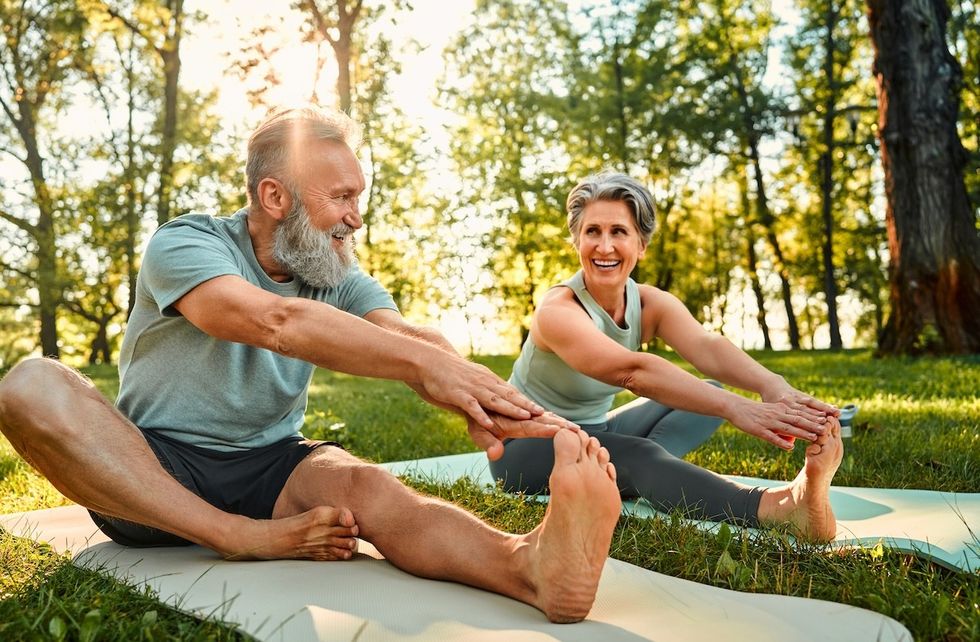A pre-workout routine is just as important as the workout itself, whether you’re hitting the treadmill or popping into a fitness class. Ahead of working out, you’ll want to ensure you’re fueled properly, well-hydrated, and warmed up. For instance, you may do a light jog before breaking into a fast-paced run or slowly increase your heart rate with jumping jacks and high knees. Stretching is another common warm-up exercise. In fact, researchers now say that improving your range of motion and flexibility could actually help stretch your time on Earth.
RELATED: World’s Longest-Living People Do an Easy Daily Exercise for Just 5 Minutes.
Stretching is a simple form of exercise that can—and should—be done daily. It can look like knee-to-chest stretches, quad stretches, leg swings, side stretches, or arm circles. Stretching keeps muscles loose and flexible, helping our joints maintain their full range of motion. When muscles aren’t properly stretched, they recoil and constrict, which can increase the risk of joint pain, strains, and muscle damage, per Harvard Health.
And now, research suggests that improving your joints’ range of motion could be the secret to a longer, healthier life, according to a recent study published in the Scandinavian Journal of Medicine & Science in Sports.
The study involved 3,139 middle-aged adults between the ages of 46 and 65 living in Rio de Janeiro, Brazil. Over the course of 13 years, researchers evaluated participants’ range of motion using a comprehensive flexibility assessment tool called the Flexitest. The objective? To find out whether there’s a direct correlation between flexibility and life expectancy.
The Flexitest measures a human body’s rate of flexibility via 20 different joint movements that utilize the ankles, knees, torso, hips, wrists, elbows, and shoulders. During the exam, participants were scored on a scale from zero to four, with four being the maximum range of motion. Each movement received its own score. At the end, those numbers were added together to create a “Flexindex” score, which determined a participant’s overall body flexibility.
RELATED: 11 Easy Ways to Stay Flexible as You Age.
The study found that individuals with higher Flexindex scores were expected to live longer than those who weren’t as flexible. These results held up even after researchers factored in participants’ age, body mass index, and overall health status.
If we look at specifics, men in the top 10 percent of flexibility had a 7.8 percent death rate, whereas the lowest 10 percent had a 21.2 percent death rate. For the women, the least flexible group had a 15.4 percent death rate, while the top 10 percent had only a two percent death rate.
Overall, the women’s Flexindex scores were 35 percent higher than the men’s Flexindex scores.
“Being aerobically fit and strong and having good balance have been previously associated with low mortality. We were able to show that reduced body flexibility is also related to poor survival in middle-aged men and women,” study author Claudio Gil S. Araújo, PhD, said in a statement obtained by StudyFinds.

